-
 Bitcoin
Bitcoin $85,153.7008
0.19% -
 Ethereum
Ethereum $1,611.9471
0.74% -
 Tether USDt
Tether USDt $0.9999
0.00% -
 XRP
XRP $2.0824
0.07% -
 BNB
BNB $594.8487
0.44% -
 Solana
Solana $141.0161
2.06% -
 USDC
USDC $0.9999
0.00% -
 Dogecoin
Dogecoin $0.1592
0.25% -
 TRON
TRON $0.2430
0.70% -
 Cardano
Cardano $0.6310
0.14% -
 UNUS SED LEO
UNUS SED LEO $9.3462
-0.44% -
 Chainlink
Chainlink $13.0583
1.67% -
 Avalanche
Avalanche $19.9002
3.45% -
 Stellar
Stellar $0.2464
0.71% -
 Toncoin
Toncoin $3.0068
0.59% -
 Shiba Inu
Shiba Inu $0.0...01238
1.46% -
 Sui
Sui $2.1560
0.93% -
 Hedera
Hedera $0.1659
-0.64% -
 Bitcoin Cash
Bitcoin Cash $338.2209
0.30% -
 Polkadot
Polkadot $3.9317
5.47% -
 Hyperliquid
Hyperliquid $18.1514
1.10% -
 Litecoin
Litecoin $76.7521
0.57% -
 Bitget Token
Bitget Token $4.5877
3.38% -
 Dai
Dai $0.9999
0.00% -
 Ethena USDe
Ethena USDe $0.9992
-0.01% -
 Pi
Pi $0.6419
-0.41% -
 Monero
Monero $216.9663
1.85% -
 Uniswap
Uniswap $5.3190
1.42% -
 Pepe
Pepe $0.0...07480
2.77% -
 OKB
OKB $50.8919
0.00%
What is the "double-spending problem" in blockchain? How is it solved?
Blockchain uses cryptographic hashing, distributed consensus (like Proof-of-Work), and a decentralized network to prevent the double-spending problem—where the same cryptocurrency is spent twice—a critical vulnerability in digital currencies lacking central control.
Mar 19, 2025 at 01:25 am
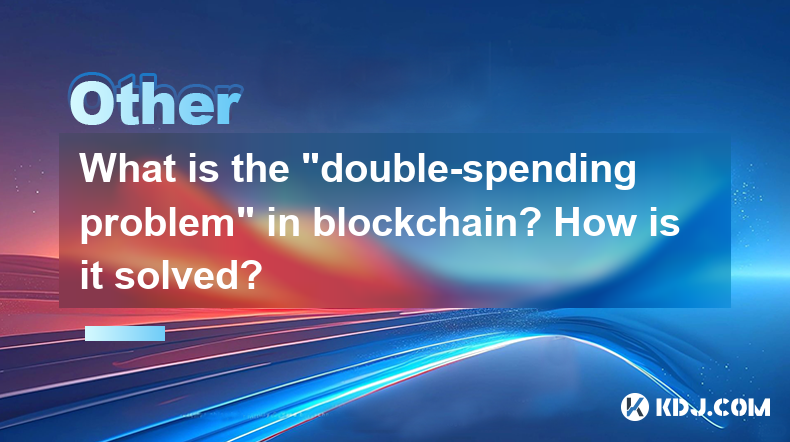
Key Points:
- The double-spending problem refers to the risk of a single cryptocurrency being spent twice. This is a major challenge in digital currency systems that lack a central authority.
- Blockchain technology solves this problem through a combination of cryptographic hashing, distributed consensus mechanisms, and a decentralized network of nodes.
- Different consensus mechanisms (Proof-of-Work, Proof-of-Stake, etc.) offer varying levels of security and efficiency in preventing double-spending.
- Understanding the double-spending problem and its solution is crucial for comprehending the fundamental security of blockchain-based cryptocurrencies.
What is the "Double-Spending Problem" in Blockchain?
The double-spending problem is a fundamental challenge in digital currency systems. It arises because digital information, unlike physical cash, can be easily copied. A malicious actor could potentially spend the same cryptocurrency twice: once to a legitimate recipient, and then again to a different recipient, effectively stealing the funds from the first transaction. This undermines the entire concept of a secure and trustworthy digital currency. Without a robust solution, the value and utility of any cryptocurrency would be severely compromised.
How Blockchain Solves the Double-Spending Problem
Blockchain technology tackles the double-spending problem using a multi-faceted approach. The core of the solution lies in its decentralized, distributed ledger system. This means that every transaction is recorded on a public, shared ledger replicated across a vast network of computers (nodes).
- Cryptographic Hashing: Each block of transactions is linked to the previous block using cryptographic hashing. Altering any past transaction would require recalculating all subsequent hashes, making it computationally infeasible to tamper with the blockchain’s integrity.
- Distributed Consensus Mechanisms: These mechanisms ensure that all nodes agree on the valid sequence of transactions. The most prevalent is Proof-of-Work (PoW), where miners compete to solve complex mathematical problems to add new blocks to the chain. The first miner to solve the problem gets to add their block, and the network verifies its validity.
- Network Effect: The decentralized nature of the blockchain means there's no single point of failure. Even if some nodes are compromised, the majority of honest nodes will maintain the integrity of the blockchain, preventing fraudulent transactions from being accepted.
Proof-of-Work (PoW) in Detail
PoW is a computationally intensive process that requires miners to expend significant energy and resources to solve cryptographic puzzles. The first miner to solve the puzzle adds the next block of transactions to the blockchain. This process ensures that altering past transactions is extremely difficult because it would require controlling more than 50% of the network's hashing power (a 51% attack). While effective, PoW has drawbacks, such as high energy consumption and potential centralization risks around mining pools.
Alternative Consensus Mechanisms
Besides PoW, several alternative consensus mechanisms exist, each addressing the double-spending problem with different approaches and trade-offs:
- Proof-of-Stake (PoS): In PoS, the right to add new blocks is determined by the amount of cryptocurrency a node holds (its stake). This reduces energy consumption significantly compared to PoW.
- Delegated Proof-of-Stake (DPoS): DPoS allows token holders to vote for delegates who will validate transactions and add blocks. This offers faster transaction speeds and lower energy consumption than PoW.
- Proof-of-Authority (PoA): In PoA, a pre-selected set of validators, often known entities, are responsible for verifying and adding blocks. This mechanism prioritizes trust in the validators over computational power.
- Practical Byzantine Fault Tolerance (PBFT): PBFT is a deterministic consensus algorithm designed for smaller networks. It achieves consensus quickly and efficiently but scales poorly to larger networks.
Transaction Confirmation and the Double-Spending Window
Even with robust consensus mechanisms, there’s a small window of time, known as the "confirmation time," before a transaction is considered irreversible. This is because a malicious actor could theoretically create a competing blockchain with their fraudulent transaction before the legitimate transaction is widely confirmed. However, the probability of this happening decreases exponentially with each additional block added after the legitimate transaction. Most cryptocurrencies consider a transaction sufficiently confirmed after several blocks have been added on top.
The Role of Mining Pools in Preventing Double-Spending
Mining pools are groups of miners who combine their computing power to increase their chances of solving the PoW puzzle. While they enhance mining efficiency, they can also raise concerns about centralization. A large mining pool controlling a significant portion of the network’s hashing power could theoretically attempt a 51% attack. However, the vast majority of pools operate ethically, and the decentralized nature of the blockchain mitigates the risk to a large extent.
Frequently Asked Questions:
Q: Can the double-spending problem ever be completely eliminated?
A: While blockchain technology significantly mitigates the double-spending problem, it cannot be entirely eliminated. The possibility of a 51% attack, though incredibly difficult and expensive, always remains. The effectiveness of the solution depends on the security and decentralization of the specific blockchain network.
Q: How does the number of confirmations affect the security of a transaction?
A: More confirmations increase the security of a transaction. Each additional block added after a transaction makes it exponentially harder for a malicious actor to reverse it. The required number of confirmations varies depending on the cryptocurrency and the risk tolerance.
Q: Are all cryptocurrencies equally resistant to double-spending?
A: No, different cryptocurrencies use different consensus mechanisms and have varying levels of security. The choice of consensus mechanism, network size, and the overall security practices of the cryptocurrency project all contribute to its resistance to double-spending.
Disclaimer:info@kdj.com
The information provided is not trading advice. kdj.com does not assume any responsibility for any investments made based on the information provided in this article. Cryptocurrencies are highly volatile and it is highly recommended that you invest with caution after thorough research!
If you believe that the content used on this website infringes your copyright, please contact us immediately (info@kdj.com) and we will delete it promptly.
- MoonPay CEO Ivan Soto-Wright Asks Congress to Keep State Regulators Involved in Stablecoin Regulation
- 2025-04-20 13:55:14
- Web3 AI Emerges as a Strong Contender, Outperforming Solana (SOL) and Cardano (ADA) by Delivering Impressive Returns and Enhanced Scam Protection
- 2025-04-20 13:55:14
- Telegram Fires Back, Exposing How French Authorities Only Recently Started Playing by EU Rules
- 2025-04-20 13:55:13
- Pi Network Releases Its Mainnet Migration Roadmap
- 2025-04-20 13:55:13
- A coin, which is going up for auction
- 2025-04-20 13:45:12
- $TRUMP coin has gained some momentum at the start of the long Easter weekend — but not for the right reasons.
- 2025-04-20 13:45:12
Related knowledge
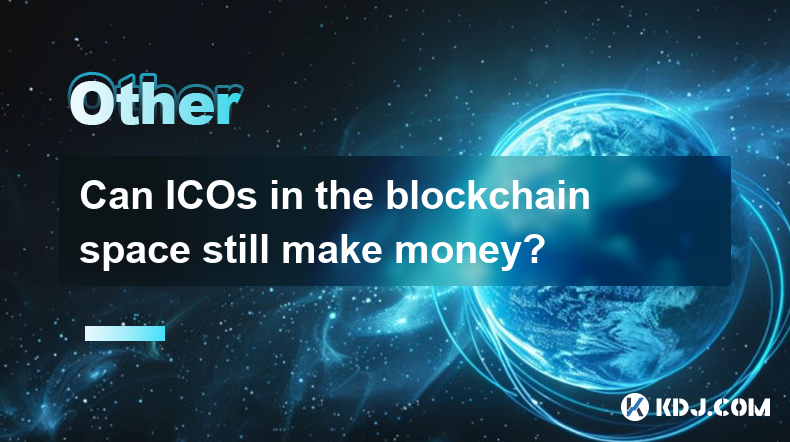
Can ICOs in the blockchain space still make money?
Apr 17,2025 at 08:29pm
The landscape of Initial Coin Offerings (ICOs) in the blockchain space has evolved significantly since their peak in 2017 and 2018. Despite the increased regulatory scrutiny and the rise of alternative fundraising methods like Security Token Offerings (STOs) and Initial Exchange Offerings (IEOs), ICOs can still be a viable way to raise funds and generat...

Can the application of blockchain in supply chain finance bring benefits?
Apr 15,2025 at 04:00pm
Can the application of blockchain in supply chain finance bring benefits? The integration of blockchain technology into supply chain finance has garnered significant attention in the cryptocurrency and financial sectors. This article explores how blockchain can potentially revolutionize supply chain finance, detailing its benefits and providing a compre...
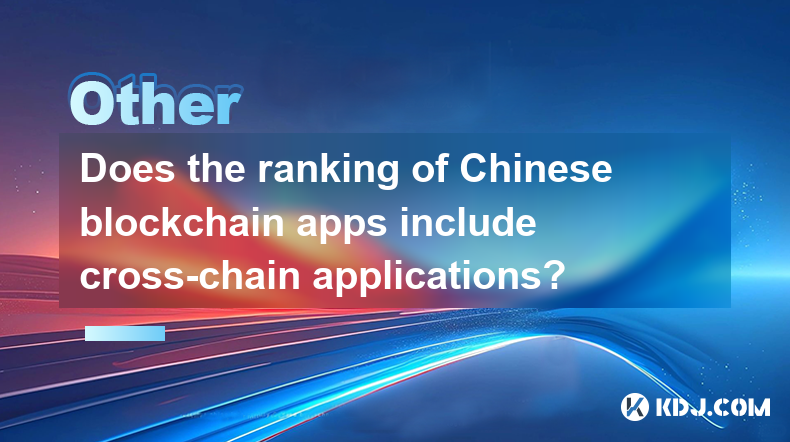
Does the ranking of Chinese blockchain apps include cross-chain applications?
Apr 14,2025 at 04:00pm
The ranking of Chinese blockchain apps is a comprehensive evaluation that takes into account various aspects such as user base, transaction volume, and technological innovation. A pertinent question arises regarding whether these rankings include cross-chain applications. Cross-chain applications, which allow different blockchain networks to interact an...
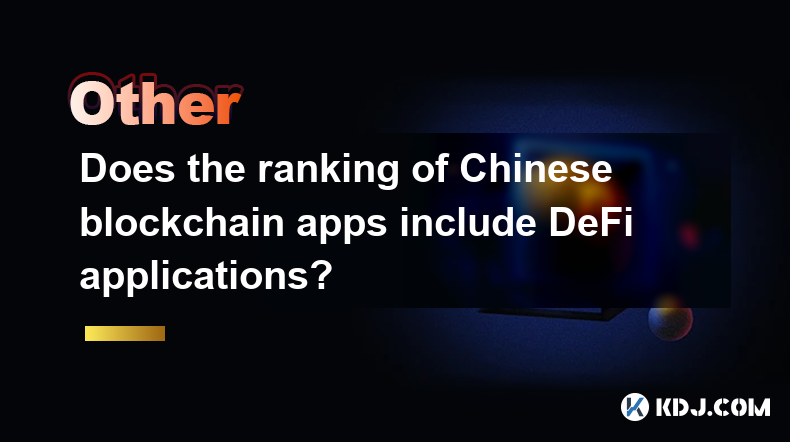
Does the ranking of Chinese blockchain apps include DeFi applications?
Apr 15,2025 at 06:57am
The ranking of Chinese blockchain apps is a comprehensive list that showcases the most popular and influential applications within the cryptocurrency ecosystem. One question that often arises is whether these rankings include DeFi applications. To answer this, we need to delve into the specifics of how these rankings are compiled and what types of appli...
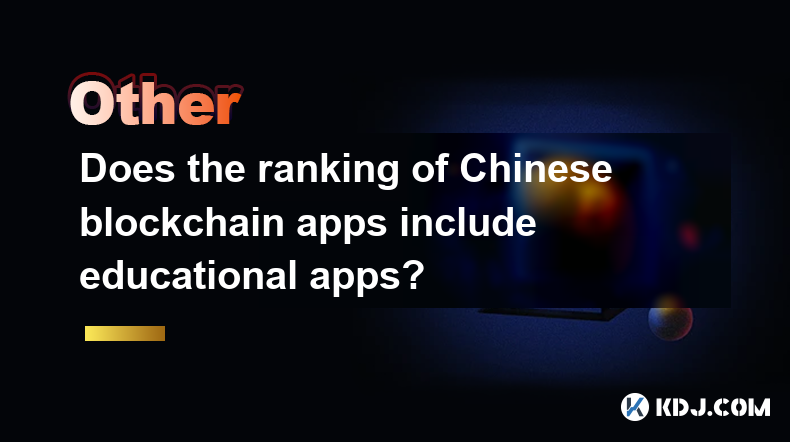
Does the ranking of Chinese blockchain apps include educational apps?
Apr 16,2025 at 03:35am
The ranking of Chinese blockchain apps often includes a variety of categories, from finance and gaming to social networking and beyond. One question that frequently arises is whether these rankings include educational apps. To address this, we need to delve into the specifics of how blockchain apps are categorized and ranked in China, and whether educat...
Does the ranking of Chinese blockchain apps include enterprise-level applications?
Apr 15,2025 at 06:42am
The ranking of Chinese blockchain apps often includes a variety of applications, ranging from consumer-focused to enterprise-level solutions. Understanding the scope and criteria for these rankings is essential to determine if enterprise-level applications are included. This article delves into the specifics of how Chinese blockchain app rankings are co...

Can ICOs in the blockchain space still make money?
Apr 17,2025 at 08:29pm
The landscape of Initial Coin Offerings (ICOs) in the blockchain space has evolved significantly since their peak in 2017 and 2018. Despite the increased regulatory scrutiny and the rise of alternative fundraising methods like Security Token Offerings (STOs) and Initial Exchange Offerings (IEOs), ICOs can still be a viable way to raise funds and generat...

Can the application of blockchain in supply chain finance bring benefits?
Apr 15,2025 at 04:00pm
Can the application of blockchain in supply chain finance bring benefits? The integration of blockchain technology into supply chain finance has garnered significant attention in the cryptocurrency and financial sectors. This article explores how blockchain can potentially revolutionize supply chain finance, detailing its benefits and providing a compre...

Does the ranking of Chinese blockchain apps include cross-chain applications?
Apr 14,2025 at 04:00pm
The ranking of Chinese blockchain apps is a comprehensive evaluation that takes into account various aspects such as user base, transaction volume, and technological innovation. A pertinent question arises regarding whether these rankings include cross-chain applications. Cross-chain applications, which allow different blockchain networks to interact an...

Does the ranking of Chinese blockchain apps include DeFi applications?
Apr 15,2025 at 06:57am
The ranking of Chinese blockchain apps is a comprehensive list that showcases the most popular and influential applications within the cryptocurrency ecosystem. One question that often arises is whether these rankings include DeFi applications. To answer this, we need to delve into the specifics of how these rankings are compiled and what types of appli...

Does the ranking of Chinese blockchain apps include educational apps?
Apr 16,2025 at 03:35am
The ranking of Chinese blockchain apps often includes a variety of categories, from finance and gaming to social networking and beyond. One question that frequently arises is whether these rankings include educational apps. To address this, we need to delve into the specifics of how blockchain apps are categorized and ranked in China, and whether educat...

Does the ranking of Chinese blockchain apps include enterprise-level applications?
Apr 15,2025 at 06:42am
The ranking of Chinese blockchain apps often includes a variety of applications, ranging from consumer-focused to enterprise-level solutions. Understanding the scope and criteria for these rankings is essential to determine if enterprise-level applications are included. This article delves into the specifics of how Chinese blockchain app rankings are co...
See all articles























































































